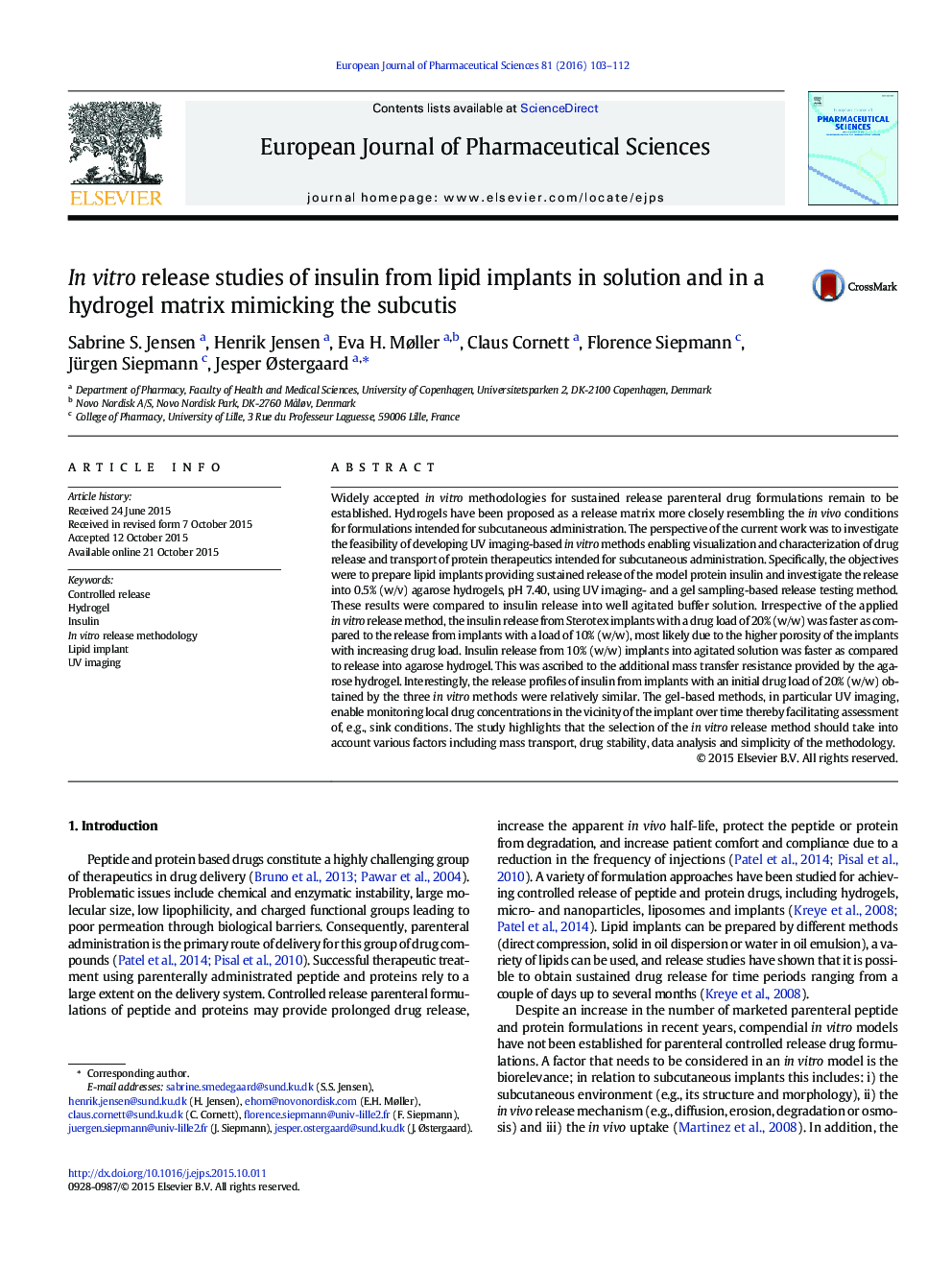| کد مقاله | کد نشریه | سال انتشار | مقاله انگلیسی | نسخه تمام متن |
|---|---|---|---|---|
| 2480089 | 1556169 | 2016 | 10 صفحه PDF | دانلود رایگان |
Widely accepted in vitro methodologies for sustained release parenteral drug formulations remain to be established. Hydrogels have been proposed as a release matrix more closely resembling the in vivo conditions for formulations intended for subcutaneous administration. The perspective of the current work was to investigate the feasibility of developing UV imaging-based in vitro methods enabling visualization and characterization of drug release and transport of protein therapeutics intended for subcutaneous administration. Specifically, the objectives were to prepare lipid implants providing sustained release of the model protein insulin and investigate the release into 0.5% (w/v) agarose hydrogels, pH 7.40, using UV imaging- and a gel sampling-based release testing method. These results were compared to insulin release into well agitated buffer solution. Irrespective of the applied in vitro release method, the insulin release from Sterotex implants with a drug load of 20% (w/w) was faster as compared to the release from implants with a load of 10% (w/w), most likely due to the higher porosity of the implants with increasing drug load. Insulin release from 10% (w/w) implants into agitated solution was faster as compared to release into agarose hydrogel. This was ascribed to the additional mass transfer resistance provided by the agarose hydrogel. Interestingly, the release profiles of insulin from implants with an initial drug load of 20% (w/w) obtained by the three in vitro methods were relatively similar. The gel-based methods, in particular UV imaging, enable monitoring local drug concentrations in the vicinity of the implant over time thereby facilitating assessment of, e.g., sink conditions. The study highlights that the selection of the in vitro release method should take into account various factors including mass transport, drug stability, data analysis and simplicity of the methodology.
Figure optionsDownload high-quality image (144 K)Download as PowerPoint slide
Journal: European Journal of Pharmaceutical Sciences - Volume 81, 1 January 2016, Pages 103–112
